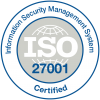A business rule is a statement that imposes limitations on specific aspects of the form, such as the elements entered in a particular element field or the characteristics of a given relationship in the element fields.
- Always give meaningful names to the business rules while creating them to avoid confusion in the future. This will also help you identify a rule quickly if you have a long list.
- We recommend you use the copy option of business rules instead of creating the rule from scratch to save time.
- Use the quick edit feature to edit the business rules for minor changes.
- Ensure operators have the proper order in the case of multiple conditions in the business rule. For example, you don’t want the business rule to trigger the wrong set of events.
- It is highly recommended not to delete the rules you have created; you can always use the switch option to disable them and easily enable them again at any time. This will make your implementation hassle-free.
- If there are many rules in your app, we recommend searching for them with their names using the search option (ctrl+F).
- You can also apply access permissions using business rules for specific scenarios. For example, suppose there is a condition-based process flow, and the same approval step is used in all the flows but in a different sequence. In that case, access permissions alone cannot define the permissions for each step based on conditions. So, here you can manage to give access (Hide/Show) to the elements/section using Business Rules.
For Example:
Consider the approval flow of two activities.
Activity | Approver 1 | Approver 2 | Approver 3 | Approver 4 |
Furniture Expenses | Manager Purchase | Vp-Hr | Gm operations | Manager – F&A |
IT Equipment Expenses | Manager Purchase | Gm operations | Manager – F&A |
|
Now both the flow has GM Operations approval but at a different level. Suppose we create a workflow and user access permissions for each approval step to show the previous approver's details and hide the rest.
We will not be able to define that through access permissions because there is no provision to describe conditions in access permissions to tell the system that if a particular activity is selected, then what all GM Operations should see.
So, here we define business rules at particular workflow steps with specific conditions.

.png)






